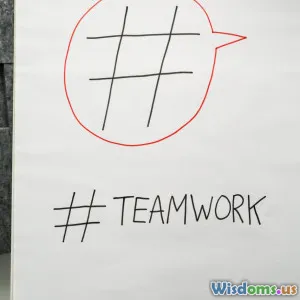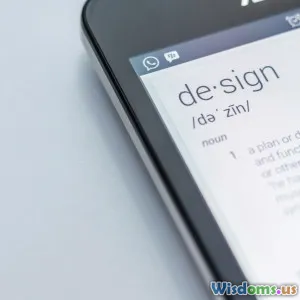
The Importance of Client Feedback in Design
6 min read Discover how client feedback shapes effective graphic design and fosters creativity. (0 Reviews)
The Importance of Client Feedback in Design
In the field of graphic design, creativity thrives on collaboration, and one of the most vital components of this collaborative process is client feedback. Clients are not just passive recipients of design outputs; they play an essential role in shaping the final product. Understanding the importance of client feedback can transform the design process, leading to more successful projects and satisfied clients.
Why Client Feedback Matters
1. Aligning Vision and Expectations
Every design project starts with a vision. However, the designer's vision may not always align with the client's expectations. By inviting feedback early in the design process, designers can gain insights into the client’s objectives, preferences, and brand values. This alignment is crucial, as it ensures that the design reflects the client's goals and resonates with their target audience.
2. Enhancing Creativity
Feedback is not just about critique; it can also be a source of inspiration. Often, clients provide unique perspectives that can spark new ideas and creative directions. Engaging clients in the design process encourages a two-way dialogue that can lead to innovative solutions that might not have been considered otherwise. Designers can use client feedback to explore new avenues while maintaining the core elements of the project.
3. Improving Communication
Effective communication is a cornerstone of successful design projects. Regular feedback sessions facilitate open dialogue between designers and clients, helping to clarify any misunderstandings and ensuring that everyone is on the same page throughout the development process. This communication helps to build trust and fosters a collaborative environment where ideas can flow freely.
4. Reducing Revisions and Costs
Incorporating client feedback at various stages of the design process can significantly reduce the number of revisions required. When clients are involved in the decision-making process from the beginning, they can provide input on their preferences and requirements, leading to more focused design iterations. This not only saves time but also reduces costs associated with multiple revisions and project delays.
Best Practices for Gathering Client Feedback
To maximize the benefits of client feedback, designers should adopt specific strategies to create a constructive feedback loop:
1. Set Clear Objectives
Before initiating feedback sessions, it’s essential to establish clear objectives for what you want to achieve. Define key areas where feedback is needed, such as color schemes, typography, layout, or overall messaging. This focused approach helps clients provide more relevant and actionable feedback.
2. Use Visual Aids
Visual aids such as mockups, prototypes, or sketches can help clients better understand design concepts. These tools allow clients to visualize the design in context, making it easier for them to articulate their thoughts and preferences. Providing visual references can also streamline the feedback process, ensuring that discussions are grounded in specific design elements.
3. Create a Feedback-Friendly Environment
Encourage clients to share their thoughts openly by creating a welcoming atmosphere for feedback. Let them know that their opinions are valued and that constructive criticism is welcomed. Ask open-ended questions to prompt discussion and delve deeper into their preferences.
4. Document Feedback
Keep a record of all feedback received, categorizing it into actionable items. This documentation will help track changes and ensure that all client suggestions are addressed. Additionally, it provides a reference point for future projects, allowing designers to learn from past experiences.
5. Follow Up
After implementing feedback, follow up with clients to see if the changes meet their expectations. This not only shows that you value their input but also opens the door for further discussion and refinement. Regular follow-ups help maintain a strong client-designer relationship and foster continued collaboration.
Conclusion
Client feedback is an indispensable part of the graphic design process, serving as a catalyst for creativity, alignment, and improved communication. By actively seeking and incorporating client input, designers can create more effective and impactful designs that resonate with the intended audience. Embracing client feedback not only enhances the quality of the work but also strengthens the designer-client relationship, leading to a more satisfying and successful project outcome. In the dynamic world of graphic design, the collaborative spirit fostered through feedback is the key to unlocking creativity and achieving success.
Rate the Post
User Reviews
Popular Posts





















